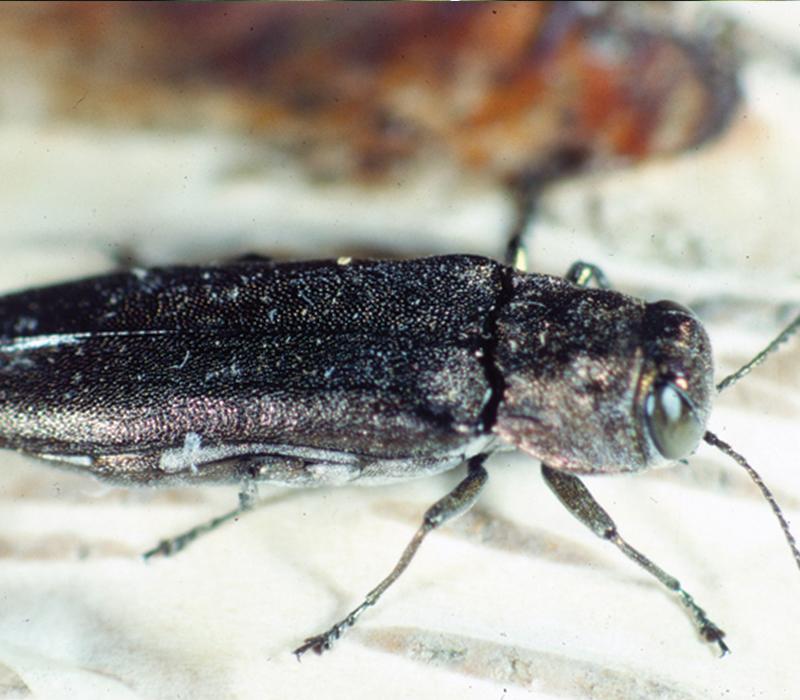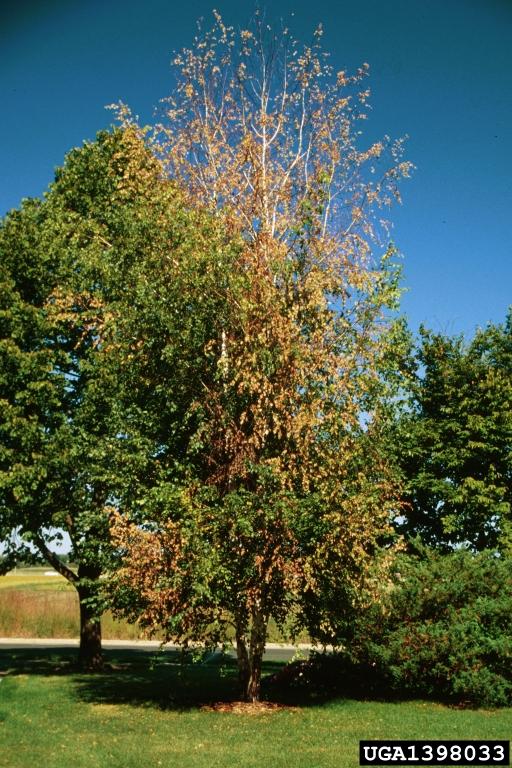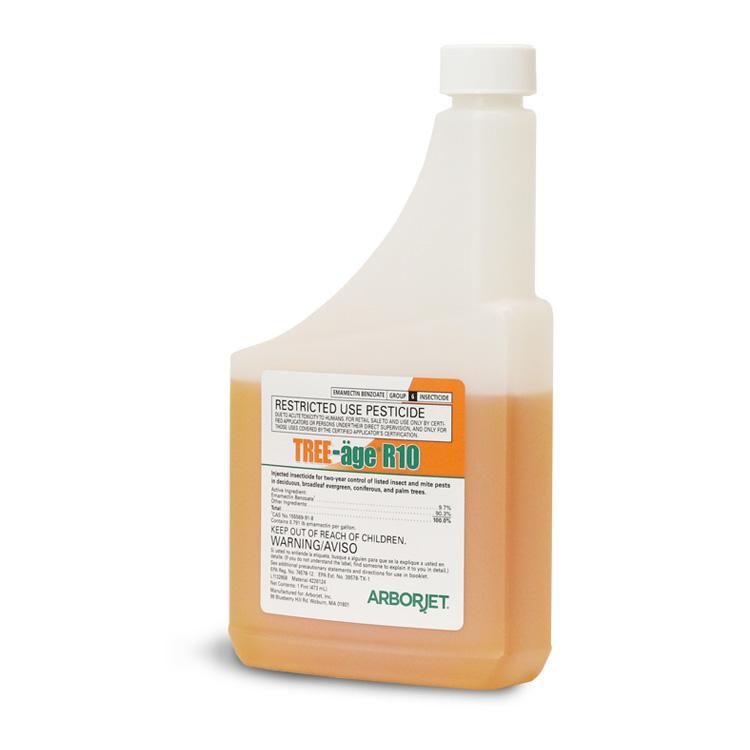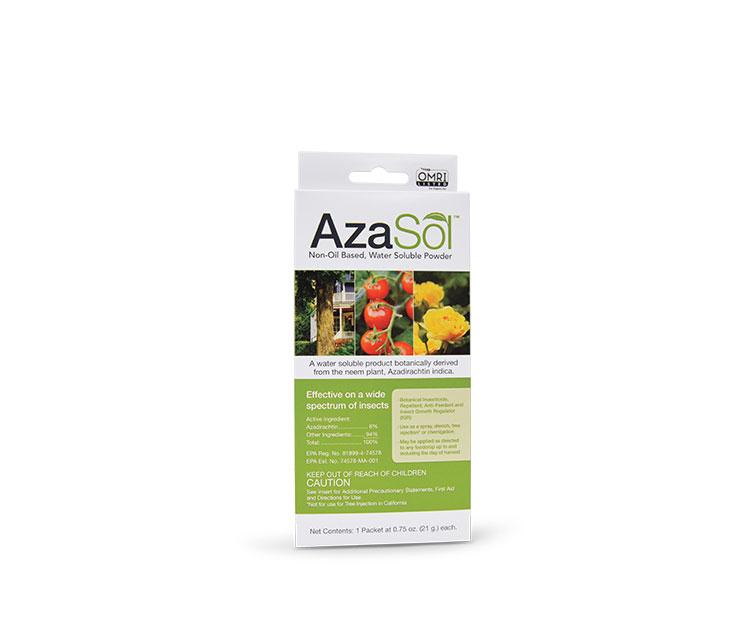Bronze Birch Borer
The Bronze Birch Borer (BBB, Agrilus anxius) is a wood boring beetle, common across the northern half of the United States, which attacks and kills all birch species.
The adult is a copper/bronze colored slender beetle. The larvae, which cause the damage, are unseen, feeding on the vascular tissue under the bark. BBB typically attacks trees which are already stressed or in decline. A birch infested with BBB will start showing dieback in the crown, increasing in severity as the infestation continues, often leading to death of the tree. In later stages of infestation, the trunk will show D-shaped, rust-stained exit holes and may also have swollen extrusions under the bark where the tree tried to grow over larval galleries.
Common Symptoms
BBB larvae live under the bark and feed on the nutrient and water-conducting vascular tissues. Larvae create meandering galleries through the phloem, vascular cambium and etch the xylem, effectively girdling the tree. Dieback of the canopy is a symptom of BBB larval infestation; more than one half of the branches may die back as infestation progresses. The tree responds to canopy dieback by sprouting new (epicormic) branches below the disrupted tissues. The bark will split over dead vascular tissues, and trees may die within only two years of the onset of symptoms.
Treatments
Treat for BBB with either TREE-äge® or IMA-jet®. The comparatively large vasculature in birch trees will readily move IMA-jet upward into the canopy. TREE-äge is more viscous and will take slightly longer to inject but will provide a longer residual effect. AzaSol botanical can also be used. TREE-äge, IMA-jet and AzaSol will eliminate the Bronze Birch Borer larvae inside the tree.
When To Treat
Independent studies strongly recommend that treatments be applied early, before extensive disruption occurs to the vascular tissues. Arborjet recommends treatment when Bronze Birch Borer is detected in your area, but trees still appear healthy for best outcomes (dieback symptoms on infested trees should be <40%).
Applications should be made in the spring, about 30 days prior to expected adult emergence; however, treatment may be applied during the growing season (May – September) to protect trees. Uptake of formulation is fastest when trees are actively transpiring, after they have developed a full canopy. BBB treatment in the spring will prevent the adult beetles from feeding and laying eggs in the tree, whereas summer treatment will kill the larval stage of BBB feeding under the bark. Make summer treatment applications in the morning when temperatures are moderate. If soil is dry, water trees prior to treatment. Injection in the fall (after leaves color but before they fall) can protect the tree for the following season.
Trees need to be closely monitored for symptoms of BBB as infestation builds in your area. In general, applications are not made more than once a year. TREE-äge treatments for BBB may provide two years of activity.
What To Expect After Treatment
TREE-äge will kill both the BBB larvae under the bark as well as adult beetles that feed on the tree. IMA-jet will kill the BBB larvae under the bark and deter adult feeding on the treated tree. TREE-äge will provide two years of residual control. A single application of IMA-jet will provide control of BBB for a full year. The long-term prognosis for trees that are treated early (i.e., before vascular injury) is very good to excellent. Tree recovery from an established infestation is relative to the severity of the infestation at the time of treatment.
References And Photo Credits
Main photo of adult beetle taken by John A. Davidson University of Maryland College, Bugwood.org
Bronze birch bore larva aken by Whitney Cranshaw, Colorado State University, Bugwood.org
Bronze Birch Borer emergence hole photos taken by Whitney Cranshaw, Colorado State University, Bugwood.org
Bronze Birch Borer damage taken by Steven Katovich, USDA Forest Service, Bugwood.org










